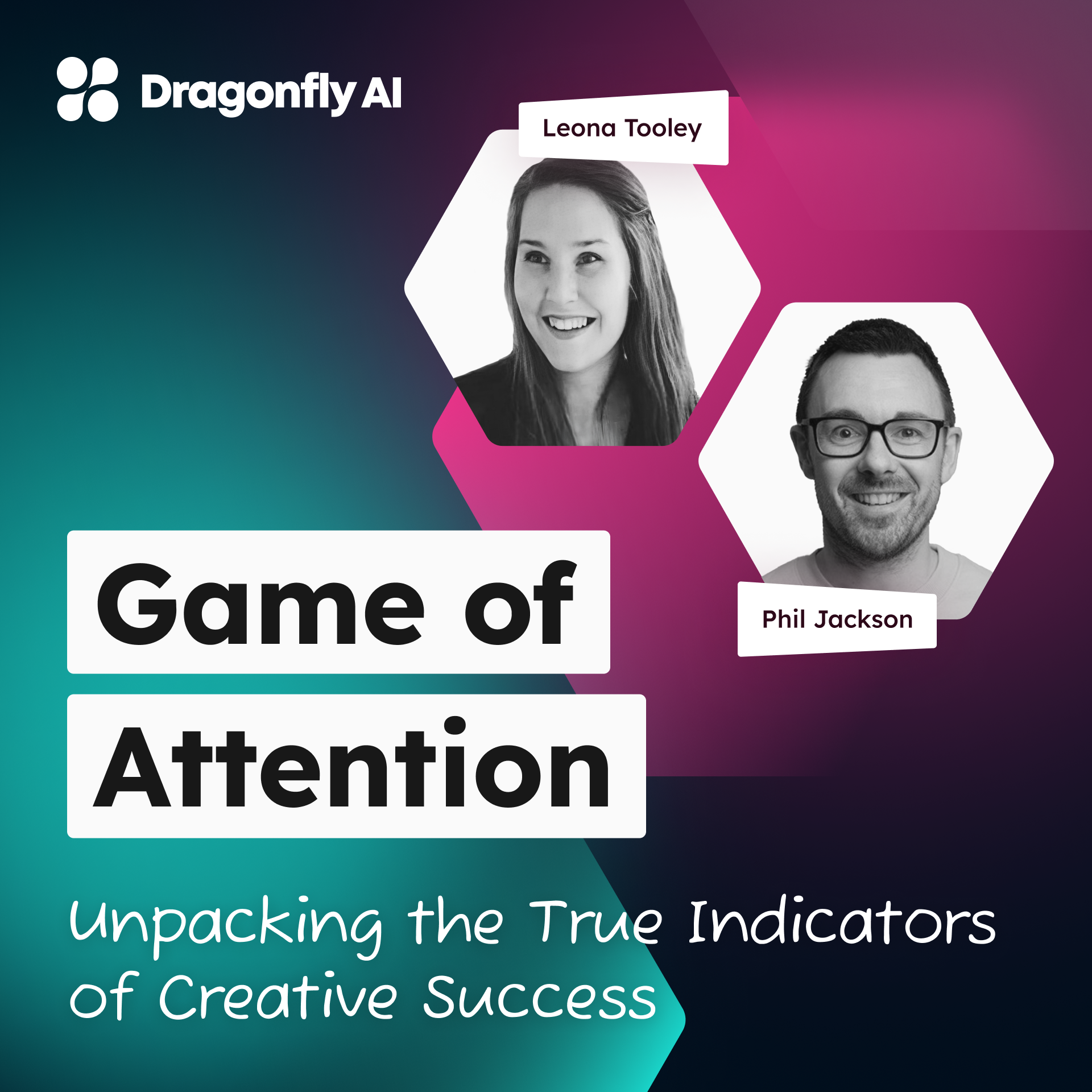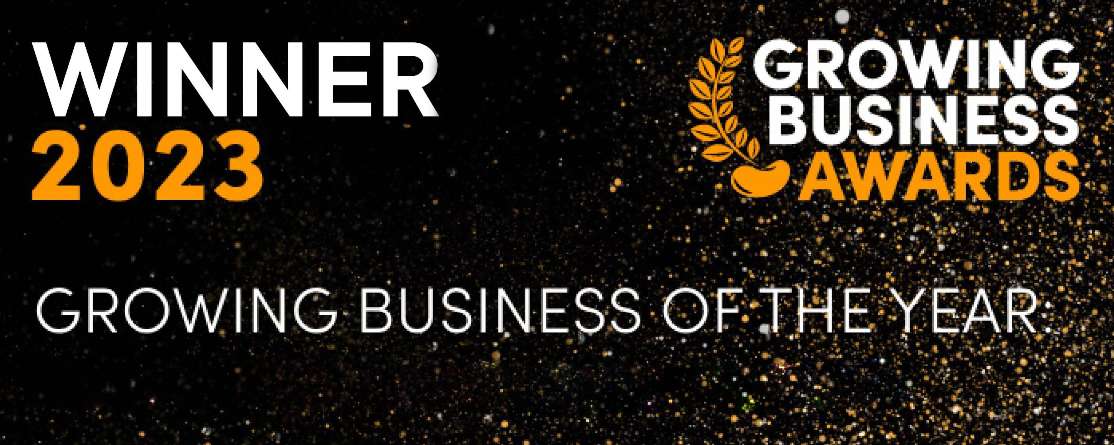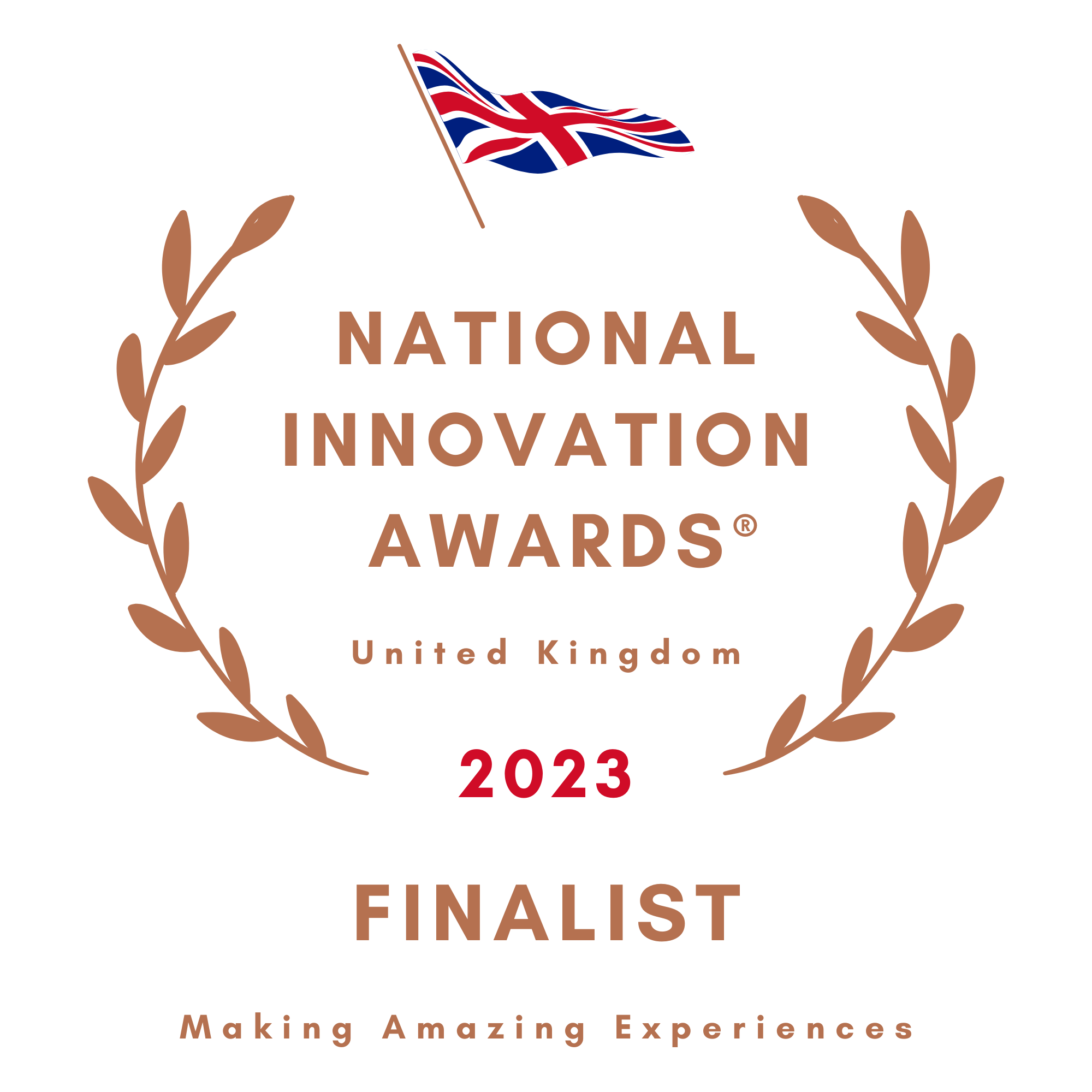Dragonfly AI is a predictive analytics platform designed to help you improve the quality and effectiveness of your creative across any format, channel and market.
Unpacking the True Indicators of Creative Success
Expert-led podcast discussing trending articles, and news in the AI and attention spaces.

Webcasts led by experts
In this episode Sophie Pain invites Leona Tooley, Digital Lead, and Phil Jackson, Global Digital Marketing Effectiveness Innovation Director, to share their thoughts on the true indicators of creative success.
This is the summary of the chat between the experts, make sure to watch the whole discussion above or listen on Spotify here.
Q: When we think of creative success, we often lean on performance metrics like clicks or conversions. What are some alternative indicators of success that go beyond numbers and what could their value be?
Leona: A really strong way of looking at success is by using the hard data mixed with emotion and sentiment feedback that you get from customers or end users.
We're quite fortunate now with the wonder of social media that we see reactions come in almost immediately. You can gauge how people are feeling, what's landing, what's not, if you've completely missed the mark. I think looking at the human response to what you're putting out there in the world. That's not to say hard data doesn't have its place. I just think they can go hand in hand.
Phil: Success means in market results, short term and long term enabling your stakeholders who are responsible for the development of creative and all the various different assets that may result from a creative idea to demonstrate their decision makers and their stakeholders that results in market are being driven as a result of that campaign. Effectiveness is now a very hot topic in the industry and measurement professionals are kind of getting their day in the sun to bring measurement to the forefront and show how creative media can combine to deliver those results.
Q: Are there any metrics that you've seen that tend to be a little bit more important for creative success?
Phil: It very much depends on the job to be done. You may not be familiar with Haleon, but you'll definitely be familiar with the brands that we manufacture and distribute. So Sensodyne toothpaste, Panadol painkillers, and those brands carry with them a lot of longer-term equity. The job to be done is typically about reminding consumers that we were an option and what are the right moments that we can kind of positively impact their lives and benefit them on their respective health journeys. When that comes to success, that's about people understanding what our products can do, the efficacy, and the equity that the brand holds and the categorical points that we service. But then also you're looking at revenue growth, penetration.
It's about having a measurement toolkit that services everything that you need to measure as a business. Creative is one of the ways you can slice those results to understand the contribution that it's having.
Q: Is there a way that metrics like memorability can provide an extra edge when it comes to the campaigns that are being distributed?
Phil: Unless people see you, recognize you and you hold in their memories, it's very difficult to have any impact whatsoever. It's one of the things that we're wrestling with all the time is how much attention and memorability does a big brand like us need? I love this time of year because it's when everyone starts seeing the Coca-Cola ad on TV and it only takes about one second to know that this year, they managed to make it even a bit more complicated with AI layered into the creative process. That's one of those examples of an advert that is instantly recognizable.
Leona: I think memorability can span in terms of how long you've kept the customer's attention for, but also how do people feel when they watch, for example, the John Lewis ads, people haven't even seen them before they come out each year, yet they're banking on how much they're going to cry. That's how they measure their success. Controversially, I don't love this year because I didn't cry. But that's another way it's memorable because I didn't cry at this one.
I think people have that kind of affinity with the brand, knowing how it makes them feel without even having seen an intro to an ad. I'm starting to see more long form communication in the emotional space.
Q: What advice would you give to creative teams who are traditionally data-focused on incorporating attention, emotion, and memorability into their measuring toolkit?
Leona: I would remind them to look at their consumer or customer as not just pound signs or bit of extra data to add to your database, but an actual human being that you could walk past in the street, you could meet at the pub or the gym, they are just another person in their own universe who have life moments that you can relate to, even if it's a very tenuous link, there is something that you can connect to. So rather than just trying to get the most out of them, try and really find a way to pinpoint those moments. Even if it means taking a step back and going for a softer approach.
Phil: There's a relatively limited bandwidth in most marketeer's world, given how much they must cover across advertising, also distribution and price and all the other kind of levers that they're trying to pull on to kind of deliver profitable growth for their brand. For example, where a large advertiser already works with a very well-established pre-testing partner and we start getting this data in from another source, how does it complement that? How does that align with that decision you're trying to make as a marketeer? Because just by adding extra data, that doesn't always make things better.
Q: Currently for a lot of brands, the main creative goes into that large, large scale TV ad and then that's then cut down into different platforms to best fit in that way. Do you see a future where actually they'll start creating those ads specifically for the digital space and then kind of turning that up into the TV world or do you think that might just be a step too far?
Phil: Well, thankfully we're already past that. We work in a category model where you've got a category team or global team working on a global toolkit for all our markets and then how that's localized in Thailand versus the US versus Spain. Obviously, there's nuance there about the the consumers and the jobs to be done for that brand, but we're seeing far more fit for platform content created for either TikTok or YouTube, whether that's a shorts ad or whether that's a non-skippable ad.
That is adding complexity to the process, to the skill sets required, to the tools that you need to test and to do all those things as well.
Q: Can attention metrics reveal untapped market segments or consumer interests and how might these insights then lead into a strategic shift for a brand? Anyone like to that one?
Phil: On the creative side, there's been an explosion of companies working in this space and there is convergence there. That's one of the biggest opportunities at the moment.
We understand how much attention we think this advert is going to get in this environment. However, this environment typically only gives you two seconds. And we think that we need six seconds to do this job effectively. You can't put that square peg in that round hole.
How do we build creative and certain assets that are going to do a job in those spaces? Because you're to have to be very interesting or very impactful to stretch the elasticity of that placement beyond what its norms are. That's one really interesting area where the two are working together and helping us to make better decisions about what an advert needs to be able to accomplish in a certain period.
Leona: In terms of attention metrics this is where the hard data comes in, as well as the nice fluffy stuff that I love to report on. Looking at who is reacting, we can set out our target audiences to the nth degree, get super, super granular because we know who our people are, who we want to shop, but look at where it actually lands, look at who is actually shopping, or look at who is browsing or using you as a resource, and seeing if they match your audience’s data.
If they do, then great, you're where you want to be, but you could find that it's the complete opposite personality that you're expecting and trying to get to the bottom of why they're paying attention to the ads that you're putting out there.
Nothing stays the same for very long, but data is quite like Pandora's box. But there are some golden nuggets in there that you can really tap into that you might never have thought of looking at. it's not just taking the numbers, but looking at each number as the person that they are and why they're doing what they're doing.
What an amazing discussion with two incredibly experienced experts in measuring creative success.
Thank you all for engaging with this episode.
Please make sure to watch or listen to the entire session, there are some quality insights you don’t want to miss!
And make sure to subscribe here.


